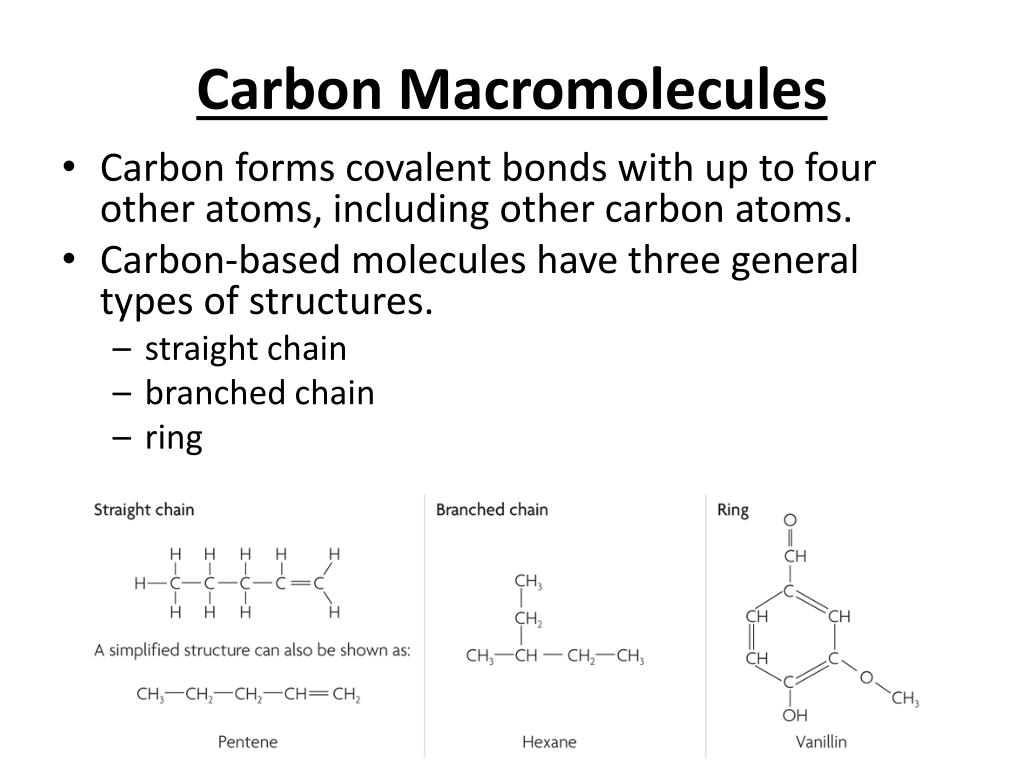Carbon macromolecules are giant molecules made up of thousands of atoms held together by strong covalent bonds. They include proteins, carbohydrates, lipids, and nucleic acids. Proteins are the largest and most complex carbon macromolecules. They are composed of amino acids arranged in a specific order determined by the sequence of DNA base pairs in the gene that codes for the protein. Carbohydrates are smaller molecules that consist of simple sugars (monosaccharides) or two sugar units (disaccharides) joined together by glycosidic bonds. Lipids are even smaller molecules that consist of fatty acids and other lipid groups joined together by noncovalent bonds. Nucleic acids are very large molecules consisting of long chains of nucleotides (the building blocks of DNA and RNA).
Proteins play many vital roles in cells including: structural support, enzymatic activity, transport and storage, cell-to-cell communication, and immunity. Proteins can be divided into four main categories: enzymes, hormones, antibodies, and proteins involved in cell structure/function. Enzymes catalyze chemical reactions in cells; hormones regulate various cellular processes; antibodies protect against disease; and proteins involved in cell structure/function provide scaffolding or act as channels for transportation across membranes.
Carbohydrates also have many important functions in cells including: energy storage (glycogen), structural support (cellulose), recognition sites for enzymes (glycoproteins), osmotic balance (hyaluronic acid), and protection from predators or pathogens (chitin). Carbohydrates can be divided into three main categories: monosaccharides, disaccharides, and polysaccharides. Monosaccharides are single sugar units such as glucose or fructose; disaccharides are two monosaccharide units bonded together such as sucrose or lactose; polysaccharides are long chains of monosaccharide units bonded together such as starch or cellulose.
Lipids play several important roles in cells including: energy storage (triglycerides), membrane structure (phospholipids), signaling molecules (steroids), insulation from heat loss (fatty acids), waterproofing tissues (waxes), storing vitamins A, D, E & K which dissolve poorly in water but easily in fats ,and taste sensations( some fatty acids). Lipids can be divided into four main categories: triglycerides, phospholipids , steroids ,and waxes . Triglycerides store more than twice as much energy per gram than carbohydrates do , making them an ideal way to store excess energy . Phospholipids make up the majority (~50%)of all lipids found in living organisms with their defining feature being a phosphate “head”group . Steroids contain four fused rings while waxes contain straight chain alkanes with varying lengths .
Nucleic Acids contains nitrogenous bases Adenine(A) Thymine(T) Cytosine(C) Guanine(G) which form hydrogen bonds to hold the two strands complementarily paired like a ladder twisted into a double helix shape . The sequence of these nitrogenous bases is what determines genetic information encoded within DNA which is passed down from generation to generation .


